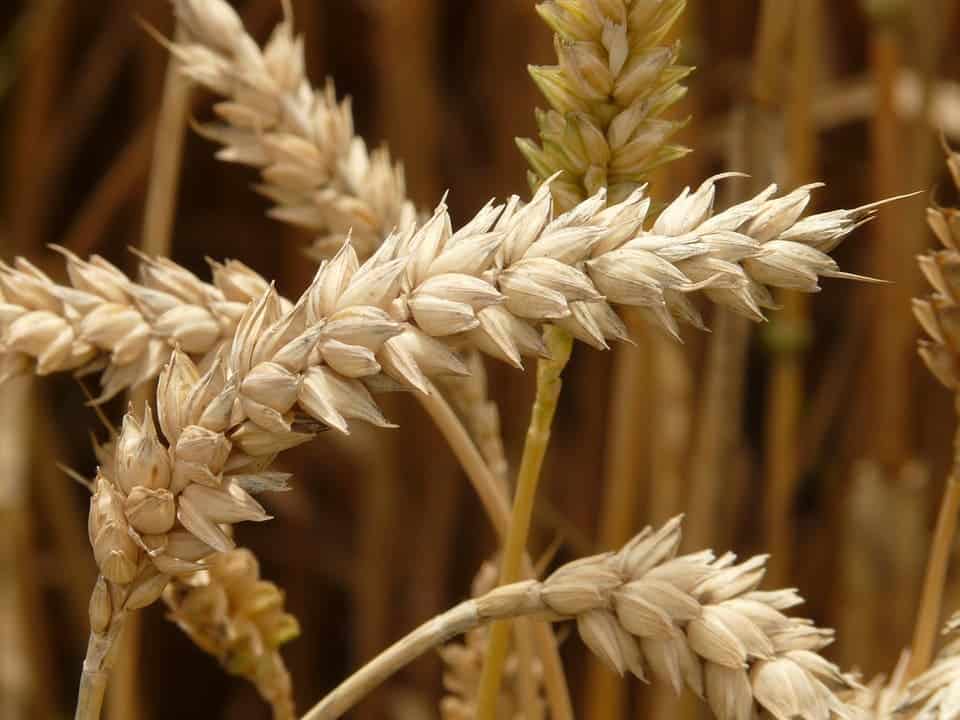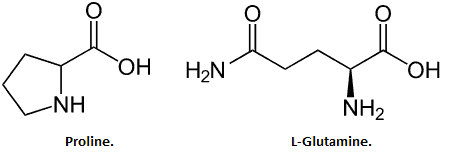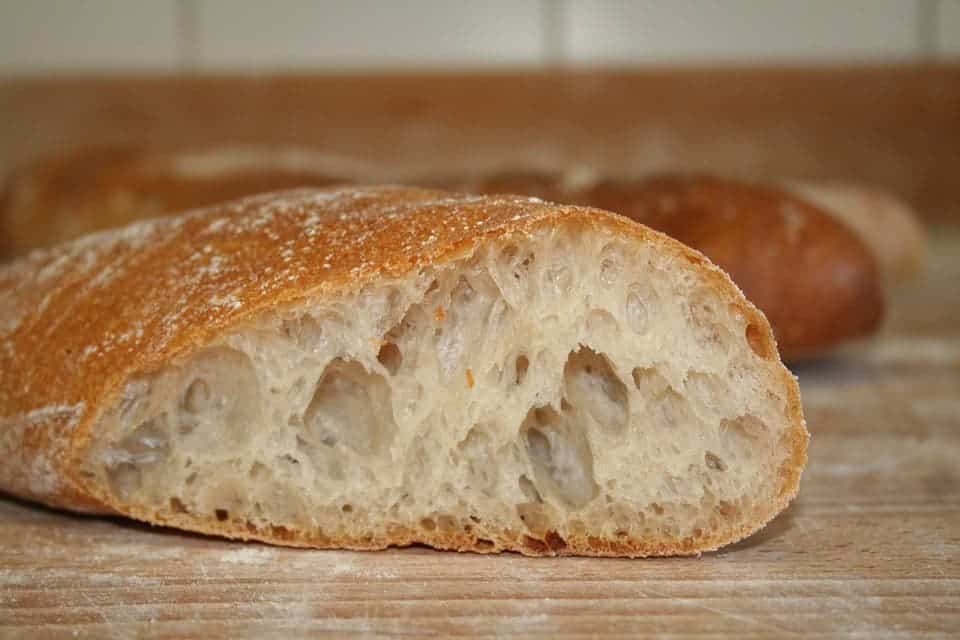“Gluten” is an umbrella term used to denote the mix of storage protein compounds found in all species and hybrids of wheat and its related grains (barley, rye, etc). Not a single substance but rather a mixture of various kinds of protein, gluten is, simply put, the way these cereals store building materials for the future.

Image credits Hans Braxmeier.
Owing to proteins’ tendency to bunch up or string together, gluten lends elasticity and texture to baked goods, making them either chewy or crunchy — “gluten” is actually the Latin word for “glue”. It’s also the object of many a fad diet and legitimate dietary concerns (primarily in the shape of allergies or intolerances), and a cool compound to use in making DIY playdough.
What is gluten made of
So right off the bat, gluten doesn’t have a set chemical structure. Its composition varies depending on the species in question and the exact percentages very likely differ from individual to individual. But in a general sense, gluten is a mixture of prolamins and glutelins.
Prolamins are a family of storage proteins used to stockpile (mainly) proline and glutamine, two amino acids which underpin protein synthesis for plants. Each crop produces and stores a different brand of prolamin — gliadin in wheat, hordein for barley, secalin in rye, zein in corn, kafirin in sorghum, and avenin (minor protein) in oats. Glutelins do basically the same thing as prolamins in chemically-different combinations and shapes. They’re rich in amino acids, particularly glutenin (wheat), though to a lesser overall degree than prolamins.

All plants use protein stores of one kind or another, mostly concentrated in fruits in the case of endosperms, earmarked to supply budding plants during germination. The term gluten is sometimes extended to these stores as well (especially for corn or rice as they’re also cereals) but true gluten (with prolamins and glutelins) is only found in wheat, its related grains, and their species and hybrids. Some other gluten-free grains you’re likely to bump or bite into are quinoa, amaranth, and oats — although this last one is usually not recommended by dietitians, as it’s usually processed through the same channels as wheat-related grains, which can contaminate it with gluten.
Why gluten is good
Proline is considered to be a non-essential amino acid in the human body (the need can be covered by internal synthesis), while glutamine plays a non-essential/conditionally essential role (it is usually supplied by the body’s own synthesis processes, but must be supplemented by diet in certain stressful conditions). Glutamine has the distinction of being the most abundant free amino acid in the bloodstream.
So while they do have nutritional value, for the most part, our bodies don’t really need these amino acids. But gluten plays a central part in how we process and then consume grains. It accounts for the lion’s share of proteins in bread — anywhere between 75 to 80% — so to understand what it does, let’s take a quick look at how these behave.

Image credits Lebensmittelfotos.
Proteins are essentially long chains of amino acids strewn together and folded into certain shapes. They do all sorts of stuff in living bodies, such as pumping compounds in and out of cells or moving things around. But the thing we’re interested in right now is that they are also the go-to compounds when mechanical resilience and stiffness are required. Your nails are so hard compared to your skin because they’re rich in keratin. Your nose never breaks because elastin strands hold the cartilage together, just like the iron rods do in reinforced concrete. Cells keep their shape because tiny filaments of protein run from wall to wall and prop them up.
And that’s what gluten does in pretty much any foodstuff made from flour. By kneading it with water, bakers “weave” gluten into long elastic strands which act similarly to those of a polymer. These strands are made up of glutenin molecules which criss-cross into a microscopic net-like pattern along with gliadin (wheat glutenin) molecules, making the dough hold together, feel a bit rubbery, and stretchable. Heat treatment such as baking or boiling breaks the folding in gluten and makes it coagulate, which, along with starch, gives bread its mechanical properties. Gluten has also been identified as playing a part in the staling of bread, likely by binding atmospheric water molecules.
To get an idea of the physical properties of gluten and how it ties food together, you can play around with a lump of pure gluten. It’s quite fun — keep your hands clean and (most of) you can eat it afterward, too. If you don’t have any lying around, tofu is a similar product (soy/plant proteins but with a higher % of fat mixed in) which is more widely available.
What is gluten intolerance
Now, my reaction to hearing about a new fad diet is a wide smile and a knowing, paternal chuckle. And a big part of the demand for gluten-free products comes down to just that — a fad. To each his own (wallet) but, considering a number of foodstuffs that have gluten and their nutritional value, going gluten-free without any medical reason isn’t the best of ideas as it could end up making your diet way worse overall.

Image credits William Murphy / Flickr.
That being said, some people who are gluten-sensitive or gluten-intolerant can’t eat gluten. There are several gluten-related disorders: celiac disease (CD) is the most common form of intolerance, then there’s the still-debated-on non-celiac gluten sensitivity (NCGS), and a slew of other nasty reactions from dermatitis herpetiformis and irritable bowel syndrome (IBS) to gluten ataxia and wheat allergy. People suffering from CD see their bodies produce an abnormal immune response when digesting gluten, making their digestive tract unable to absorb nutrients. About 18 million Americans have gluten sensitivity, according to the National Foundation for Celiac Awareness. Those with NCGS exhibit many of the same symptoms, due to poor digestion or a placebo effect, still under debate. So why does this happen?
The first thing you have to keep in mind is that while humans are omnivores, our bodies just aren’t geared to eating absolutely everything out there — but we’re very good at adapting. Certain populations overcome diet limitations over time through contact with traditional types of food.
For example, Western society as a whole is much less lactose intolerant than the rest of, well, mammals, since in nature milk is reliably on the menu only before weaning — after that, it’s highly unlikely to pop up, so mammalian bodies don’t maintain a stock of lactase because it doesn’t make economic sense for them to do so. But most westerners today have acquired lactose resistance through (relatively few) generations of natural selection for the ability to eat dairy, as milk was an important source of nutrients here. Writing in the New York time on this subject, Moises Velasquez-Manoff said:
“Few Scandinavian hunter-gatherers living 5,400 years ago had lactase persistence genes, for example. Today, most Scandinavians do.”
The “we’re not yet adapted to it” approach has a lot of support, and there may be some limited validity to that point of view in certain cases. We know of grain consumption even before agriculture, albeit on a reduced scale. It’s also likely that those cereals were poorer in gluten or might not have employed it all together (such as is the case with wild oats), meaning there was no reason to adapt to eating a lot of grains by that time. There is evidence tying CD to genetic factors. However, I’d say that adaptation similar to the one above led to a greater digestibility of gluten and likely worked up a natural tolerance for the majority of humans — else people wouldn’t have eaten it for like 23,000 years.
One other factor cited to play a hand in gluten intolerance is that selective breeding of wheat and related crops up to modern times led to increasing levels of ATIs (-α-amylase/trypsin inhibitors), which the plants use to fight off insects but also interfere with the digestive tract’s processing of gluten, and our bodies are still catching up to that. But research doesn’t point to any increase in ATIs.
One final factor may be more modern — after the transition to agriculture, the genes which cause autoimmune disorders may have provided an evolutionary advantage by keeping people extra-safe in the crowded, pathogen-rich environments of early settlements. And we’re seeing an overall increase in autoimmune disorders of every kind recently as more of the slack is taken away from our immune systems by drugs, making it liable to react out of proportion to perceived threats.
The bottom line is that we don’t really know where gluten intolerance stems from yet.
As for the other disorders, their causes vary quite a lot and may not even be understood or still debated in some cases. If you think you may have a form of gluten sensibility, speaking to a physician is your best way of getting more information.
Cool stuff gluten can do for you
You can still have some fun with gluten, even if you can’t eat it. Candia on Instructables has a nice guide set up so you can make some at home. The cream of tartar will make the dough more elastic, but even if you take it our of the mix the gluten is strong enough to keep the play-dough in one piece no matter how you stretch it. It’s basically dough so you don’t have to worry about the kids (or yourself) sneaking a bite out of it — but be mindful of intolerance.
If you’d rather feel like gluing your kids to the wall (I don’t judge), Wheatglue can come in handy. It’s as easy as mixing flour and water, as Instructabler theRIAA shows. It’s one of the oldest glues ever, used since antiquity to bind books and in the more modern art of plastering posters. Plus, it’s biodegradable so the little ones will come off on their own after some time.

You can use gluten as an alternative to tofu (seitan) and will likely appreciate its more robust texture and stronger aroma compared to the subtle soy product. And as a bonus for vegetarians, you’ll finally have a go-to answer for when people ask where you get your protein from. It even looks a lot like meat, and it’s much healthier than tofu.
So is gluten right for you? Well, statistically speaking, probably yes.


